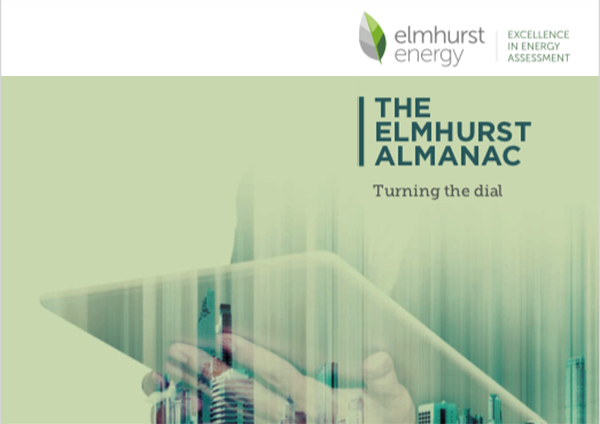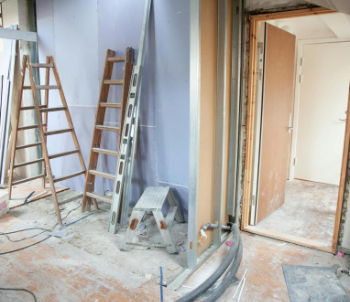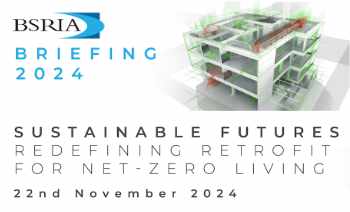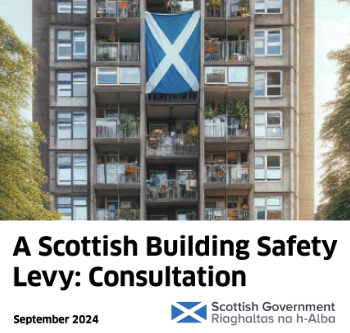Change EPC's to measure cost, consumption and carbon
Energy Performance Certificates (EPC's) must change if they are to properly support the journey to net zero, help tackle fuel poverty and improve our buildings, according to analysis from an energy efficiency almanac published this month.
‘Turning the Dial’, from Elmhurst Energy, the UK’s largest accreditation scheme for energy assessors, calls on Government to adopt the ‘Three Cs’. This would give equal focus to energy cost, energy consumption and carbon emissions in EPC's.
Elmhurst says the change is needed as part of the EPC Action Plan, first published in 2020 and still to be implemented fully. Elmhurst Energy managing director Stuart Fairlie says:
“Against a backdrop of rising fuel poverty, environmental pressures and energy security concerns, EPC's are coming in for a lot of scrutiny and criticism. This is understandable, as the EPC as it exists now is over 15 years old. It was designed then simply as a cost metric, showing how expensive or cheap a home is to run. This is now too basic a measure for the challenges we face today. People care about cost, energy consumption and carbon emissions. The time is now right to update the EPC so that it can more easily communicate vital information about the predicted and actual energy use and carbon emissions of a building.”
As well as detailing energy efficiency legislative and regulatory developments over the last year, Elmhurst’s almanac features a list of future policy recommendations, including:
- Redesign the EPC – Change the EPC to include the ‘Three Cs’: energy consumption, energy cost and carbon emissions.
- Use the ‘Golden Triangle’ for EPCs – Provide the building’s asset rating – the predicted energy cost and consumption of a building based on average occupancy, its occupancy rating – the predicted energy consumption of a building based on the people using it) and its energy consumption – the energy the building actually uses to run).
- Ensure EPCs reflect the current state of a building – Reassess and reissue an EPC every time a building undergoes changes that would impact energy performance. No EPC should be older than three years.
- Make energy efficiency education a priority – Continue to prioritise consumer education around energy efficient living, using energy assessors to support this.
- Keep updating assessment methodologies – Continue to invest in updating SAP, SBEM and RdSAP methodologies to reflect the introduction of new technologies and innovation.
In addition, Elmhurst is calling for the increased use of qualified energy assessors to help advise homeowners and businesses to boost the uptake of available renewable technologies; rebalance the tax applied to fuels to favour low emission fuels instead of fossil fuels; use available technology to measure real-time building energy consumption and heat loss; and create a national standard for Net Zero buildings, including introducing an independent certification or competent persons scheme.
Stuart Fairlie added:
“This year Elmhurst turns 30 and we have already seen the announcement of a new Department for Energy Security and Net Zero, and the launch of the new taskforce for energy efficiency in the last week. We hope the new department, faced with so many calls to update EPCs, will take head and help us deliver the energy efficiency improvements so desperately needed.”
A standard PDF of Elmhurst’s ‘Turning the Dial’ almanac is available here:
Now in its 30th year, Elmhurst is the UK’s largest EPC accreditation scheme. It supports a membership of more than 9,500 quality assured energy assessors and a growing body of retrofit assessors and coordinators. In 2021, Elmhurst members were responsible for completing more than 1.2 million EPC's in the UK.
This article was supplied via Press Release as "Cost, consumption, carbon – EPCs must change to measure all three to deliver truly energy efficient homes" dated March 1 2023.
[edit] Related articles on Designing Buildings
- Accredited energy assessor.
- Approved document L
- Building performance.
- Building performance metrics.
- Carbon ratings for buildings.
- Certificates in the construction industry.
- CRC Energy Efficiency Scheme.
- Display energy certificate.
- Emission rates.
- Energy certificates for buildings.
- Energy Performance of Buildings Directive.
- Energy Savings Opportunity Scheme.
- Energy performance certificate EPC.
- Energy certificates for buildings.
- EPC's to help improve EPC's ?.
- Home information pack HIP.
- Minimum energy efficiency standard (MEES).
- National Calculation Method.
- Passivhaus vs SAP.
- Performance gap.
- Reliance data in EPC Contracts.
- Simplified Building Energy Model.
- Standard Assessment Procedure SAP.
- Target emission rate TER.
- Two types of EPC.
- U-value conventions in practice: Worked examples using BR 443.
Featured articles and news
Considerate Constructors Scheme acquires Building A Safer Future
Acquisition defines a new era for safety in construction.
AT Awards evening 2024; the winners and finalists
Recognising professionals with outstanding achievements.
Reactions to the Autumn Budget announcement
And key elements of the quoted budget to rebuild Britain.
Chancellor of the Exchequer delivers Budget
Repairing, fixing, rebuilding, protecting and strengthening.
Expectation management in building design
Interest, management, occupant satisfaction and the performance gap.
Connecting conservation research and practice with IHBC
State of the art heritage research & practice and guidance.
Innovative Silica Safety Toolkit
Receives funding boost in memory of construction visionary.
Gentle density and the current context of planning changes
How should designers deliver it now as it appears in NPPF.
Sustainable Futures. Redefining Retrofit for Net Zero Living
More speakers confirmed for BSRIA Briefing 2024.
Making the most of urban land: Brownfield Passports
Policy paper in brief with industry responses welcomed.
The boundaries and networks of the Magonsæte.
London Build Fire and Security Expo
20-21 Nov and now with new Ambassador Programme..
The Scottish Building Safety Levy
Eight weeks of consultation closing on 18 November.
The grey, the brown and the golden rules of housing
shifting policies from the wild west of housing development.
Future proofing homes that are fit for purpose
Specification challenges and the role of plastic.
Thousands of new homes unlocked for brownfield sites
£68 million to 54 councils for neglected land into new homes.



























Comments
[edit] To make a comment about this article, click 'Add a comment' above. Separate your comments from any existing comments by inserting a horizontal line.